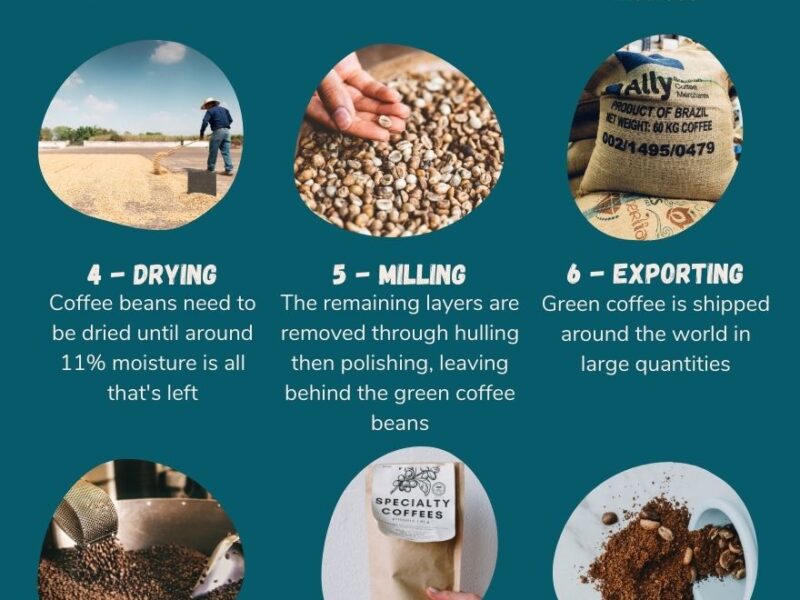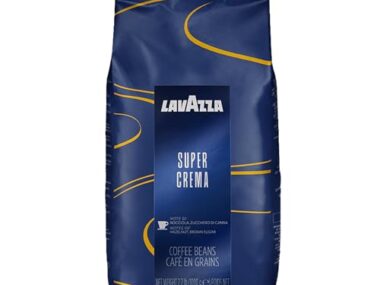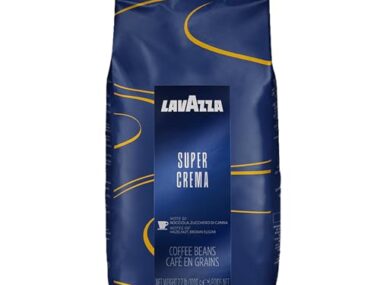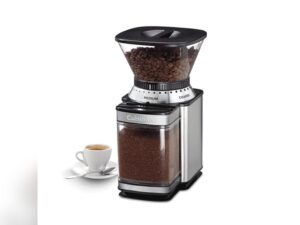The comfort of a warm cup of coffee in the morning is unmatched. But behind every great cup is a key question: which are the best coffee beans to use? Understanding what makes beans exceptional can transform your coffee from good to truly extraordinary.
The secret lies in the coffee beans you choose. With countless options available, finding the best coffee beans can feel overwhelming. But don’t worry; you’re about to discover the magic behind the beans that can transform your daily ritual into a sublime experience.
Whether you crave bold flavors or subtle notes, this guide will help you uncover the top contenders in the world of coffee beans. Get ready to elevate your coffee game and make every sip a moment to savor.
Types Of Coffee Beans
Coffee lovers often ponder over the question: which are the best coffee beans? To answer this, understanding the different types of coffee beans is essential. Each type offers unique flavors, aromas, and experiences that cater to diverse preferences. From the popular Arabica to the rare Liberica, knowing these beans will enhance your coffee knowledge and enjoyment.
Arabica
Arabica coffee beans are widely appreciated for their smooth and mild flavor profile. These beans make up about 60% of the world’s coffee production. Why are Arabica beans so popular?They are known for their sweet, soft taste and higher acidity compared to other types.
- Flavor Notes:Arabica beans often have hints of fruit and sugar, with notes of berries and nuts.
- Growing Conditions:These beans thrive at high altitudes and cooler climates, primarily in regions like Latin America and Africa.
- Price:Generally more expensive due to their delicate cultivation process.
Arabica beans are often used in specialty coffee blends. They are a favorite among coffee aficionados who enjoy a refined taste. Arabica’s versatilityin various brewing methods makes it a top choice for baristas.
Robusta
Robusta coffee beans are known for their strong and bold flavor. These beans contain more caffeine than Arabica, making them ideal for those who prefer a powerful coffee kick. What sets Robusta apart?Their robust taste, with earthy and nutty notes, often described as bitter.
- Flavor Notes:Robusta beans have deep, chocolaty flavors with less acidity.
- Growing Conditions:These beans are resilient and can grow at lower altitudes and warmer climates, commonly found in Southeast Asia and Africa.
- Price:Generally more affordable due to their hardy nature.
Robusta beans are often used in espresso blends, where their rich crema adds to the coffee’s depth. Perfect for strong coffee loversand those who enjoy a full-bodied brew.
Liberica
Liberica coffee beans offer an exotic and rare flavor experience. These beans are less common but cherished for their unique taste profile. Why choose Liberica?Their distinct floral and fruity notes make them a rare gem in the coffee world.
- Flavor Notes:Liberica beans have fruity, floral flavors with hints of spice and wood.
- Growing Conditions:Primarily grown in Malaysia, the Philippines, and parts of Africa.
- Price:Higher priced due to their rarity and limited production.
Liberica beans are often sought after by those who wish to explore unique and complex coffee flavors. Ideal for adventurous coffee enthusiastslooking to try something different.
Excelsa
Excelsa coffee beans are celebrated for their intriguing and unique taste. These beans are often used to blend and enhance other coffee flavors. What makes Excelsa special?Their tart, fruity, and dark notes create an unforgettable coffee experience.
- Flavor Notes:Excelsa beans have a complex profile, combining light and dark flavors with fruity undertones.
- Growing Conditions:Typically found in Southeast Asia, particularly Vietnam and the Philippines.
- Price:Moderately priced, often used to add depth to coffee blends.
Excelsa beans are favored by those who enjoy a diverse and layered coffee taste. Perfect for blending, offering a unique balance to various coffee concoctions.
Factors For Quality
Coffee lovers know that not all coffee beans are created equal. The quality of coffee beans can vary greatly, and several factors contribute to their unique flavors and aromas. Understanding these factors can help you choose the best coffee beans for your taste. In this section, we’ll explore the key elements that determine the quality of coffee beans.
Origin
The origin of coffee beans plays a crucial role in their flavor profile. Different regions produce beans with distinct tastes and characteristics. Some popular coffee-producing countries include:
- Brazil:Known for sweet and nutty flavors.
- Colombia:Offers a balanced taste with a mild acidity.
- Ethiopia:Famous for fruity and floral notes.
- Vietnam:Provides a strong, bold flavor.
Each region’s climate, soil, and altitude impact the beans’ characteristics. For example, Ethiopian coffee is often grown in highlands, giving it a unique acidity. In contrast, Brazilian coffee is usually grown at lower altitudes, resulting in a milder taste.
Here’s a quick overview of some regions and their typical flavors:
| Region | Flavor Profile |
|---|---|
| Brazil | Sweet, Nutty |
| Colombia | Balanced, Mild Acidity |
| Ethiopia | Fruity, Floral |
| Vietnam | Strong, Bold |
Altitude
Altitude is another critical factor in determining coffee bean quality. Beans grown at higher altitudes tend to have more complex flavors. This is because the cooler temperatures slow the beans’ maturation, allowing for richer taste development.
High-altitude coffee beans are often described as having bright acidity and intricate flavors. These beans are usually harder and denser, which enhances their quality.
- Low Altitude (Below 600 meters):Simple flavors, often mild.
- Medium Altitude (600-1,200 meters):Balanced flavors, moderate acidity.
- High Altitude (Above 1,200 meters):Complex flavors, bright acidity.
For instance, beans from the Colombian Andes are grown at high altitudes, resulting in their renowned balanced and rich taste. Meanwhile, beans from lower regions are often less acidic and simpler in flavor.
Processing Method
The processing method significantly influences the flavor and aroma of coffee beans. There are several common methods:
- Washed (Wet) Process:This method involves removing the cherry’s outer layer before drying. It results in a cleaner and brighter taste.
- Natural (Dry) Process:The beans dry with the fruit still attached, producing a sweeter and fruitier flavor.
- Honey Process:This is a hybrid method where some fruit pulp remains on the bean during drying. It yields a balance of sweetness and acidity.
Washed process beans are often preferred for their clarity and crispness. They are common in regions like Central America. On the other hand, natural process beans from countries like Ethiopia are celebrated for their bold and fruity profiles.
Harvesting Techniques
Harvesting techniques can also affect the quality of coffee beans. There are mainly two methods:
- Hand-Picking:Labor-intensive but allows for selecting only ripe cherries. This method results in higher-quality beans.
- Strip Picking:Involves removing all cherries at once. It’s faster but often includes unripe or overripe cherries.
Hand-picking is common in high-quality coffee production. This method ensures that only the best cherries are selected, enhancing the overall flavor and consistency of the beans.
In regions like Ethiopia and Colombia, hand-picking is a tradition that contributes to their beans’ exceptional quality. Strip picking, while efficient, is usually reserved for lower-grade coffee.
Top Coffee Bean Varieties
Coffee lovers worldwide seek the best coffee beans to brew their perfect cup. The taste, aroma, and flavor profile of coffee largely depend on the bean variety. Understanding these varieties helps in choosing the right beans for your taste preference. Here, we explore some of the top coffee bean varieties that are highly regarded among enthusiasts and connoisseurs alike.
Geisha
The Geishacoffee bean is a rare gem in the coffee world. It originated in Ethiopia and became famous after its introduction to Panama. Geisha beans are known for their unique and complex flavor profile.
- Flavor Notes:Jasmine, bergamot, and tropical fruits
- Acidity:Bright and vibrant
- Body:Light to medium
Geisha’s distinct taste comes from its unique growing conditions. The high-altitude farms in Panama provide the perfect climate. These beans often fetch high prices in the market due to their limited availability and exceptional quality.
| Region | Flavor Profile | Price Range |
|---|---|---|
| Panama | Floral, Sweet | High |
| Ethiopia | Citrus, Tea-like | Moderate |
Bourbon
The Bourboncoffee variety is known for its balanced and sweet flavors. It is a popular choice among coffee growers in Central and South America. Bourbon beans are highly esteemed for their rich and creamy texture.
- Flavor Notes:Chocolate, caramel, and nuts
- Acidity:Mild to medium
- Body:Medium
Bourbon trees require specific climate conditions to thrive. They are often grown at high altitudes, which contributes to their complex flavor. This variety is also known for its high yield, making it a favorite among farmers.
| Region | Flavor Profile | Growing Conditions |
|---|---|---|
| Brazil | Nutty, Sweet | High Altitude |
| El Salvador | Fruity, Chocolate | Volcanic Soil |
Caturra
Caturrais a mutation of the Bourbon variety, known for its unique flavor and high yield. This variety is popular in Colombia and Brazil. Caturra beans are loved for their bright acidity and clean cup.
- Flavor Notes:Citrus, floral, and sweet
- Acidity:High
- Body:Light to medium
Caturra trees are smaller, which makes them easier to harvest. They adapt well to various climates, offering versatility to farmers. The bright acidity and sweetness of Caturra make it a favorite for light roast lovers.
| Region | Flavor Profile | Popularity |
|---|---|---|
| Colombia | Citrus, Floral | High |
| Brazil | Sweet, Clean | Moderate |
Typica
The Typicacoffee bean is one of the oldest and most traditional varieties. It serves as the genetic base for many other coffee varieties. Typica beans are cherished for their smooth and well-rounded flavor.
- Flavor Notes:Sweet, fruity, and floral
- Acidity:Balanced
- Body:Medium to full
Typica grows best in high-altitude regions, where it develops its complex flavors. Though it has a lower yield compared to other varieties, its quality is unmatched. The well-rounded profile makes Typica a favorite among traditional coffee drinkers.
| Region | Flavor Profile | Yield |
|---|---|---|
| Jamaica | Sweet, Mild | Low |
| Hawaii | Fruity, Floral | Moderate |
Flavor Profiles
Coffee beans are not just about caffeine; they tell a story through their flavors. Each coffee bean carries a unique flavor profile influenced by its origin, processing method, and roast level. Understanding these flavor profiles helps coffee lovers choose their perfect cup. In this section, we explore the diverse flavor profiles of coffee beans that cater to different taste preferences.
Fruity And Floral
Coffee beans with fruity and floralflavors often originate from regions like Africa, especially Ethiopia. These beans are known for their bright, lively notes that can resemble fruits and flowers.
- Common Fruity Notes:Berries, citrus, and apples
- Common Floral Notes:Jasmine, rose, and hibiscus
These flavors emerge due to specific processing methods like natural or washed processes. They retain the fruit’s characteristics, making each sip a vibrant experience.
| Region | Flavor Notes |
|---|---|
| Ethiopia | Blueberry, jasmine |
| Kenya | Blackcurrant, citrus |
Such beans are perfect for those who enjoy a sweet and aromatic brew. They are often used in specialty coffee shops to create unique and memorable coffee experiences.
Nutty And Chocolatey
Nutty and chocolateyflavor profiles are beloved for their comforting, rich tastes. These beans are often found in coffees from South America, especially in Brazil and Colombia.
- Common Nutty Notes:Almond, hazelnut, and walnut
- Common Chocolatey Notes:Dark chocolate, cocoa, and milk chocolate
These flavors result from the bean’s natural oils and sugars caramelizing during the roasting process. The roast level can enhance or subdue these flavors.
| Region | Flavor Notes |
|---|---|
| Brazil | Almond, cocoa |
| Colombia | Milk chocolate, nutty |
Ideal for those who seek a smooth, velvety cup of coffee, these beans often form the base of espresso blends. They offer a delightful balance of sweetness and richness.
Spicy And Earthy
Coffee lovers often describe spicy and earthyflavors as bold and complex. These beans frequently come from regions such as Indonesia and India.
- Common Spicy Notes:Cinnamon, cloves, and pepper
- Common Earthy Notes:Tobacco, cedar, and soil
The unique flavors are influenced by the region’s soil and climate, coupled with traditional processing methods.
| Region | Flavor Notes |
|---|---|
| Sumatra | Spicy, earthy |
| India | Spicy, woody |
These beans cater to those who enjoy a more intense and aromatic coffee. They pair well with milk and cream, enhancing the spicy and earthy undertones.
Bold And Robust
For those who crave a strong coffee, bold and robustbeans are the go-to choice. These beans usually hail from regions with a strong coffee culture, such as Italy and France.
- Common Bold Notes:Dark roast, smoky
- Common Robust Notes:Bitter, intense
The flavors are a result of a dark roast, which brings out a deep, full-bodied taste with less acidity.
| Region | Flavor Notes |
|---|---|
| Italy | Smoky, robust |
| France | Bitter, bold |
These beans are perfect for making espresso and strong black coffee. They provide a powerful flavor experience, making them a favorite among those who prefer a hearty brew.
Brewing Methods
Choosing the best coffee beans can be a delightful journey. Each brewing method brings out unique flavors and aromas. Different methods highlight various aspects of the beans, from boldness to subtle notes. In this guide, explore how different beans complement these brewing techniques.
Espresso
Espresso is a concentrated coffee shot. It requires finely ground beans. The beans should be dark roasted to create a rich, bold flavor. Here are some key points to consider:
- Arabica beansare preferred for their smooth and sweet flavor.
- Robusta beansadd a stronger, more bitter taste with higher caffeine.
- Blend of both offers a balanced taste.
It’s essential to use a good quality espresso machine. Consistent pressure and water temperature are crucial. Here’s a simple table summarizing the ideal characteristics:
| Bean Type | Flavor Profile | Roast Level |
|---|---|---|
| Arabica | Sweet, Fruity | Dark |
| Robusta | Bitter, Strong | Dark |
| Blend | Balanced | Dark |
French Press
The French Press method is known for its full-bodied coffee. Coarse ground beans are ideal here. This method brings out the natural oils and robust flavors of the coffee. Some tips include:
- Use medium to dark roast beans for a strong taste.
- Single-origin beans can highlight specific regional flavors.
- Allow the coffee to steep for about 4 minutes.
French Press coffee is about balance. The grind size is crucial. Too fine and it becomes bitter; too coarse and it’s weak.
Pour Over
Pour Over brewing is about precision. It allows you to control the water flow and extraction time. For this method, lighter roasts are often preferred. They bring out delicate flavors. Consider these points:
- Light to medium roast beans are ideal.
- Single-origin coffees often shine through.
- Use a gooseneck kettle for a steady pour.
Pour Over is an art. The water temperature should be around 200°F. Consistency in pouring affects the final taste.
Cold Brew
Cold Brew offers a smooth, less acidic coffee. It uses coarse ground beans steeped in cold water. The process takes about 12 to 24 hours. Key factors include:
- Medium to dark roast beans work best.
- Blend beans for a balanced flavor.
- Use a ratio of 1:8 coffee to water for a strong brew.
Cold Brew is versatile. It can be served over ice or as a base for other coffee drinks. The extended steeping time extracts a mellow, smooth flavor profile.

Credit: www.tasteofhome.com
Sourcing And Sustainability
Choosing the best coffee beans involves more than just taste. The journey from farm to cup affects the planet and the people behind the scenes. Sourcing and sustainability are key factors in selecting beans that are not only delicious but also responsible. Understanding how coffee beans are sourced and the sustainability practices involved can make your coffee experience more rewarding and ethical.
Direct Trade
Direct trade is a coffee sourcing model that emphasizes close relationships between coffee roasters and farmers. This approach ensures that farmers receive fair compensation for their hard work. Here are some reasons why direct trade is important:
- Fair Compensation:Farmers are paid directly, often resulting in higher incomes compared to other trade models.
- Quality Control:Roasters work closely with farmers to improve bean quality, resulting in better coffee.
- Transparency:Consumers can trace their coffee back to the source, knowing exactly where it comes from.
In direct trade, roasters often visit farms to understand the challenges and opportunities. This relationship fosters trust and improves the overall quality of the coffee beans. By choosing direct trade beans, you support a system that values farmers and prioritizes quality over quantity.
Organic Certification
Organic certification guarantees that coffee beans are grown without synthetic fertilizers or pesticides. This certification is crucial for both environmental and health reasons. Here’s why organic coffee stands out:
- Environmental Impact:Organic farming practices help preserve soil health and biodiversity.
- Health Benefits:Consuming coffee free from harmful chemicals is safer for consumers.
- Certification Process:Organic certification requires rigorous checks and balances to ensure compliance with organic standards.
Many coffee farms are moving towards organic methods to meet consumer demand for healthier options. Choosing organic beans means supporting farms that prioritize sustainable agriculture and environmental stewardship. It also means enjoying coffee that is not only flavorful but also cleaner and more eco-friendly.
Fair Trade Practices
Fair trade practices focus on equitable trade relationships between producers and buyers. This model ensures that farmers receive a fair price for their coffee, promoting economic stability and community development. Key benefits of fair trade include:
- Economic Fairness:Guarantees a minimum price for coffee, protecting farmers from market volatility.
- Community Support:Fair trade premiums are invested in community projects, enhancing local infrastructure and education.
- Empowerment:Fair trade encourages democratic organization and decision-making among farmers.
Fair trade certification requires adherence to strict social, economic, and environmental standards. By choosing fair trade coffee beans, consumers contribute to a more equitable coffee industry, helping farmers build better futures for themselves and their communities.
Popular Coffee Regions
Exploring the best coffee beans leads us to some of the most captivating regions around the globe. The land, climate, and traditions of these regions shape the unique flavors and aromas of their beans. Each region offers a distinct profile, making them a favorite among coffee enthusiasts. Let’s delve into the popular coffee regions known for producing exceptional coffee beans.
Ethiopia
Ethiopia is often regarded as the birthplace of coffee. It boasts a rich history and diverse coffee culture. The beans from Ethiopia are known for their unique and complex flavors. They typically exhibit floral and fruity notes. This makes them a favorite for many coffee lovers.
The main coffee-growing regions in Ethiopia include:
- Sidamo:Known for its bright acidity and sweet, citrus notes.
- Yirgacheffe:Offers floral and tea-like flavors with a hint of berry.
- Harrar:Produces beans with wild, wine-like characteristics.
The varied climate and fertile soil contribute to the distinctive taste of Ethiopian coffee. The country’s reliance on traditional farming methods also plays a role. Ethiopian coffee is usually grown in small plots. Farmers here use no chemicals, making it mostly organic.
Colombia
Colombia is renowned for its smooth and well-balanced coffee. The country’s diverse microclimates allow for coffee growing all year round. Colombian beans are known for their rich flavor and mild acidity.
Key coffee regions in Colombia include:
- Antioquia:Offers a balanced cup with nutty and chocolatey notes.
- Huila:Known for fruity and floral flavors with bright acidity.
- Caldas:Produces sweet and clean coffee with caramel undertones.
The coffee culture in Colombia is robust. Small family farms dominate the landscape. This ensures high-quality beans and sustainable practices. Colombian coffee is often washed, which enhances its clean and crisp taste.
Brazil
Brazil is the largest coffee producer in the world. The country offers a wide range of flavors and qualities. Brazilian coffee is known for its low acidity and full-bodied profile.
Key Brazilian coffee regions include:
- Minas Gerais:Known for its chocolatey and nutty flavors.
- São Paulo:Offers a balanced cup with hints of caramel and spice.
- Bahia:Produces fruity and sweet coffee with a medium body.
The diverse climate and vast landscapes contribute to Brazil’s coffee diversity. Coffee farming in Brazil is highly mechanized. This allows for large-scale production and consistent quality. Brazilian coffee is often used in espresso blends due to its rich body.
Costa Rica
Costa Rica is celebrated for its high-quality Arabica beans. The country’s focus on sustainability and quality results in exceptional coffee. Costa Rican coffee is known for its bright acidity and full-bodied flavor.
Prominent coffee regions in Costa Rica include:
- Tarrazú:Offers a bold cup with bright citrus notes.
- Costa Rican Central Valley:Known for its balanced flavor with hints of chocolate and fruit.
- Monteverde:Produces coffee with floral aromas and sweet undertones.
The volcanic soil and ideal climate in Costa Rica provide perfect conditions for coffee growing. The country enforces strict quality controls. This ensures only the best beans make it to market. Costa Rica’s dedication to sustainable practices also enhances its coffee’s reputation.
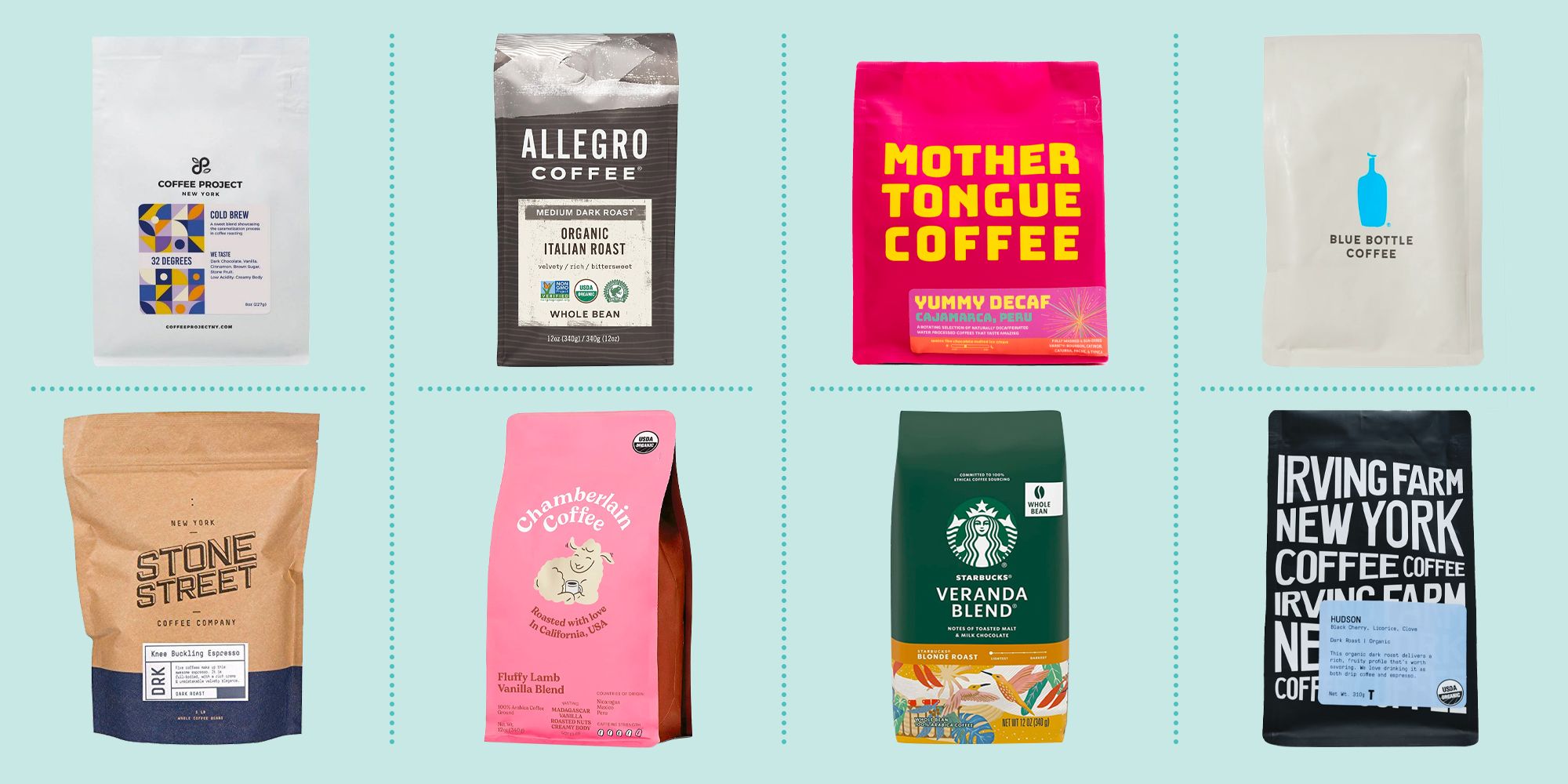
Credit: www.goodhousekeeping.com
:max_bytes(150000):strip_icc()/Staff-Coffee-opener-FT-BLOG0223-bac2139beb1146bd91d94ada56ddea0b.jpg)
Credit: www.foodandwine.com
Conclusion
Choosing the best coffee beans depends on your taste. Try different options. Explore flavors and aromas. Experiment with origins and roast levels. Each type offers unique experiences. Some prefer bold and dark, others light and fruity. Consider freshness and quality.
Specialty beans often stand out. Local roasters might surprise you. Discovering your favorite beans is a journey. Enjoy the process. Share your experiences with friends. Coffee brings people together. It creates moments. Celebrate those moments with your perfect brew. Happy tasting and sipping!
